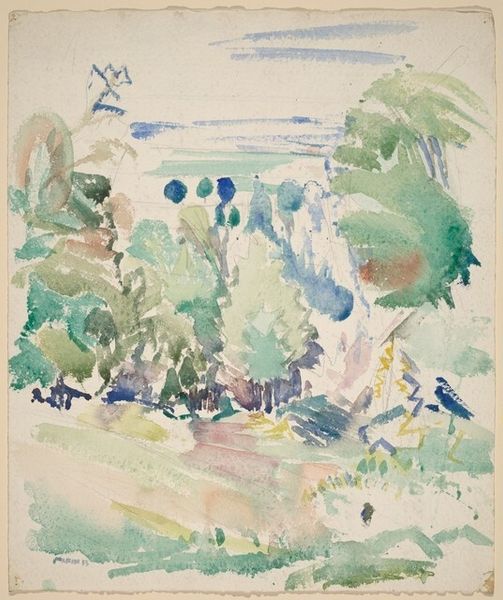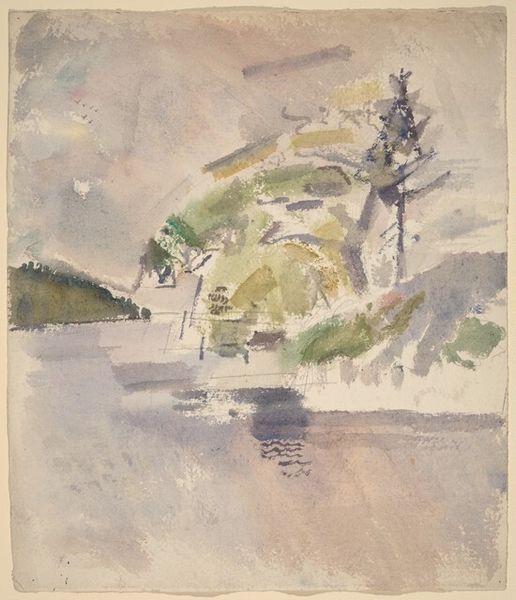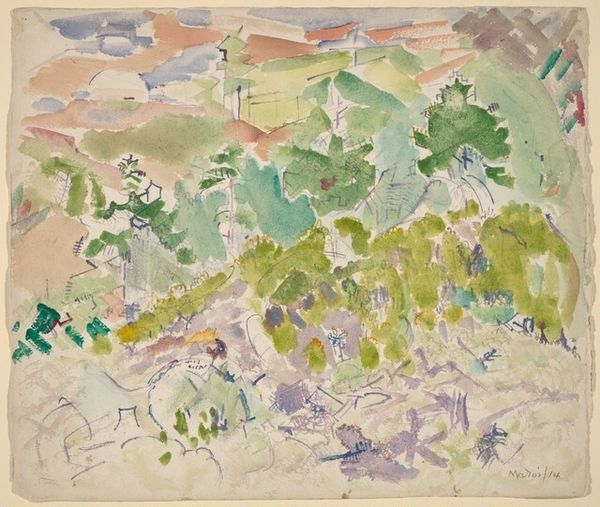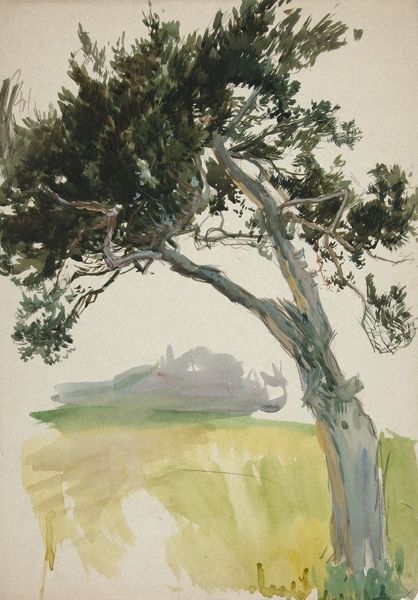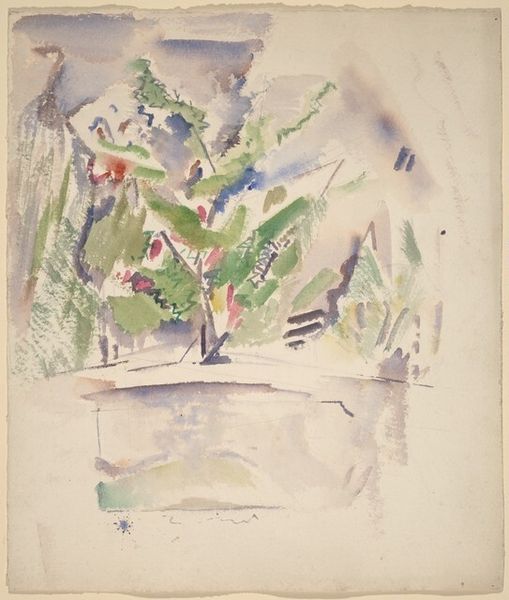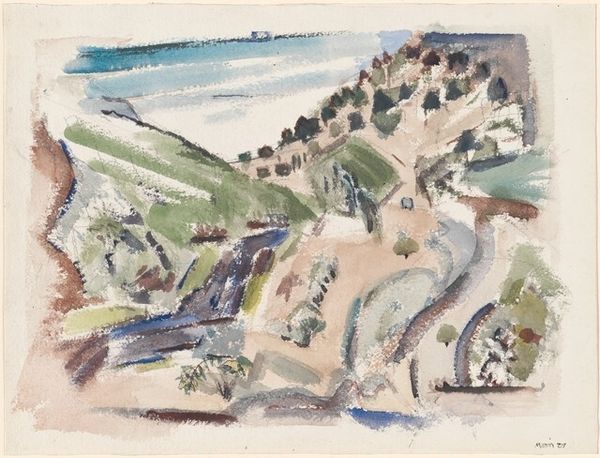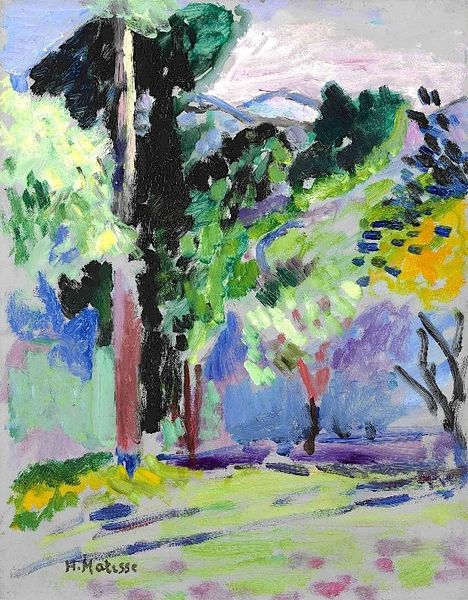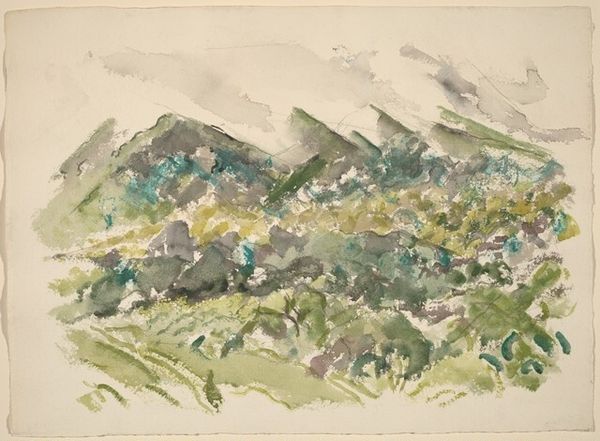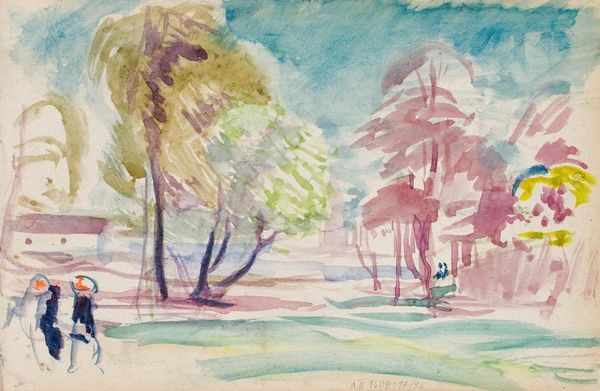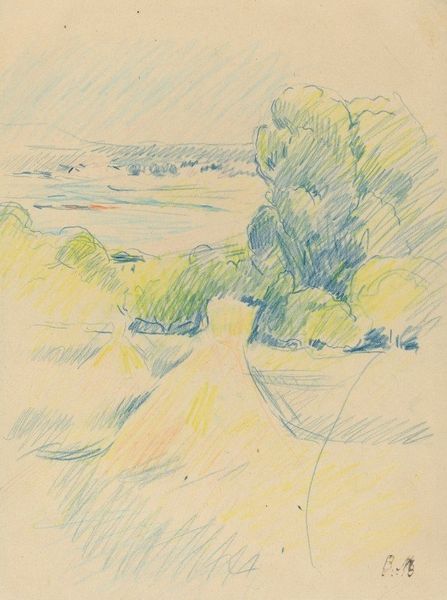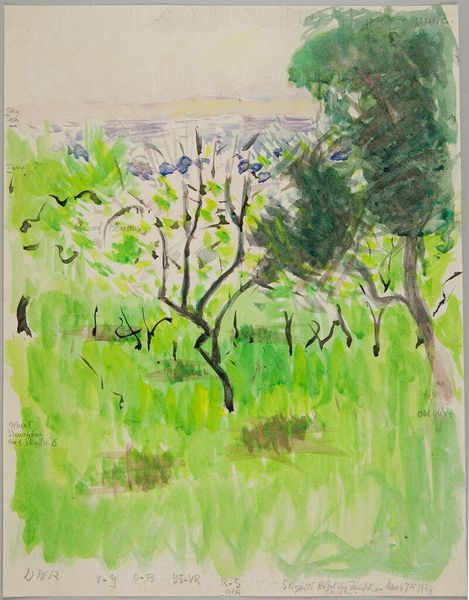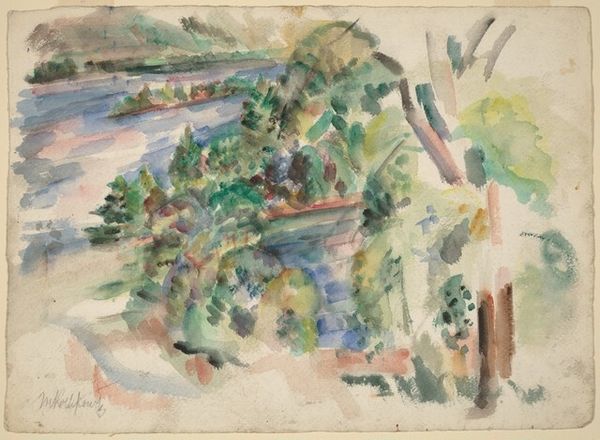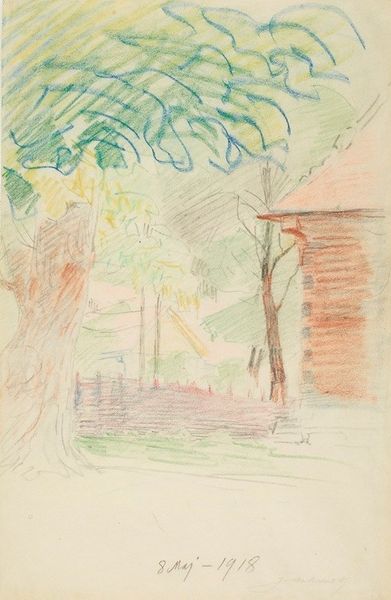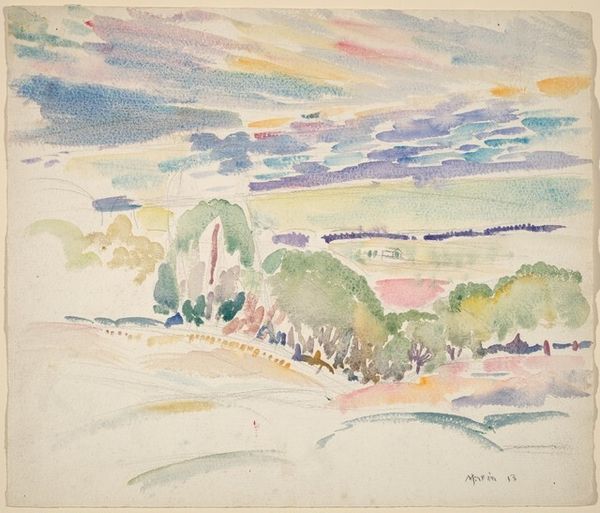
Copyright: Public Domain: Artvee
Curator: This watercolor and colored pencil sketch, titled "Landscape, Bushes, Trees and a Tower, Sketch", comes to us from the Finnish artist Magnus Enckell, dating from around 1910 to 1913. Editor: It’s incredibly ethereal. The colors are muted, dreamlike. There's a sense of quiet observation, but almost… anxious energy? The strokes are so rapid and light. Curator: That’s an astute observation. While firmly rooted in the landscape tradition, Enckell's application certainly speaks to the burgeoning Expressionist movement. Consider how the tower, seemingly a traditional symbol of strength and permanence, is rendered here: dissolving, almost. The lines around the image are very intentional and delicate, capturing the scene but perhaps a feeling as well. Editor: I notice a recurring pattern here: those repeated, almost scribbled lines which define the bushes and foliage and foreground; that rhythmic brushwork appears symbolic of an attempt to capture the unseen forces shaping this landscape – be that the weather or perhaps something deeper embedded in the cultural unconscious? Curator: The rapid, plein-air method Enckell adopted allowed him to translate fleeting sensory impressions directly to paper. Given Finland’s socio-political landscape at the time – a nation caught between Russian influence and burgeoning national identity – it begs the question whether these ‘fleeting impressions’ carry symbolic weight. Editor: I see what you mean. Look at that singular splash of red, atop a building. Is that a signal? An emblem? Perhaps hinting at something rebellious during that pre-independence period. Curator: Perhaps it signals defiance or even a subtle hint of societal discord simmering beneath the serene surface. Symbols were powerful tools for artists during periods of societal transition, allowing them to address complex issues through the veil of aesthetic representation. Editor: It makes me ponder the psychological state of Enckell himself during those years. There’s something unsettling here, despite the picture's overall charm. That blur of tower in the back compared with the density of green is emotionally evocative. It speaks to some quiet conflict maybe happening internally for the artist. Curator: Enckell frequently used nature to explore and express a sense of emotional response, not unlike many Symbolists. By juxtaposing nature and nascent expressionistic techniques he offered more than merely visual representations: deeply personalized records of inner turmoil. Editor: A potent combination, and it shows! A beautiful glimpse into a period through the vision of a talented and empathetic soul. Curator: Precisely. Enckell leaves us with a lasting visual record steeped not just in its own moment but continuing the resonance that all good art must endeavor toward.
Comments
No comments
Be the first to comment and join the conversation on the ultimate creative platform.
